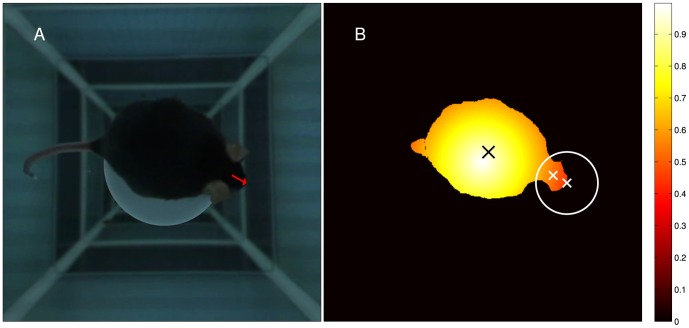Figure 4. Head tracking.
During experiments, the gaze of the freely moving animal (red arrow) is tracked continuously (A). Algorithmic steps to determine the gaze (B): Segmentation is based on a color-threshold, which is automatically determined by analyzing the pixels in the platform region. To facilitate the detection of the nose position, coordinates are weighted with a function ranging from 0 at the border of the region around the platform that the mouse can reach with its nose to 1 at the center of the platform. The center of gravity (black X) is calculated based on weighted pixels (see color bar). It is usually located in the animal's hind-quarters region. The nose (white X in circle) is usually detected as the pixel farthest from the center of gravity. The position between the ears (white X) is determined as a center of mass in a circular region (white circle) around the location of the nose. The head-gaze (red arrow in A) is calculated as the vector from the position between the ears to the position of the nose. See supporting material S1 for an example video visualizing head tracking.

